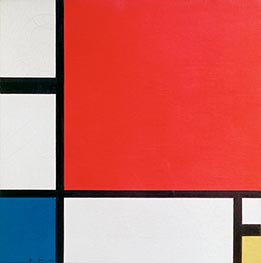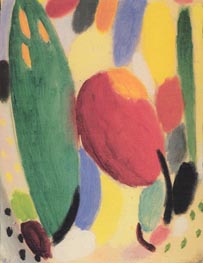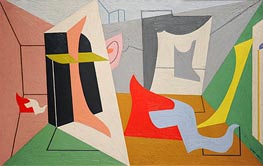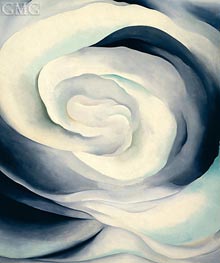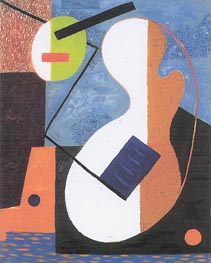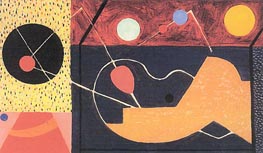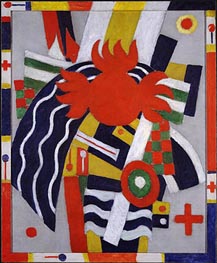Abstract Paintings - Page 16
Abstract painting is a style of art that emerged in the early 20th century as a response to the traditional forms of representation. It is characterized by non-representational forms, colors, and shapes that challenge the viewer's perceptions of reality. The movement was inspired by various sources, including Primitivism, Futurism, Cubism, and Expressionism.
Abstract painting is considered to be one of the most significant art movements of the 20th century and continues to influence contemporary art. It is a form of non-representational art, meaning that it does not depict recognizable objects or scenes from the natural world. Instead, it uses color, shape, texture, and form to create an emotional response in the viewer.
The origins of abstract painting can be traced back to the late 19th and early 20th centuries, when artists began to experiment with new forms of expression that went beyond the traditional representational style. Early pioneers of abstract art include Wassily Kandinsky, Kazimir Malevich, and Piet Mondrian.
One of the key features of abstract painting is the use of color as an expressive element in its own right. Artists such as Mark Rothko and Joan Mitchell used color in a highly emotional and expressive way, creating large, monochromatic canvases that sought to evoke a sense of spiritual transcendence.
Abstract Expressionism is another important offshoot of abstract painting. It emerged in the United States in the 1940s and 1950s and was characterized by gestural brushwork and the use of large canvases. Artists such as Jackson Pollock, Willem de Kooning, and Franz Kline became synonymous with this movement, which was seen as a highly individualistic and expressive form of art.
In conclusion, abstract painting is a diverse and complex art form that continues to evolve and inspire artists. Despite its non-representational nature, it has a rich history and has had a profound impact on the development of modern art.
Abstract painting is considered to be one of the most significant art movements of the 20th century and continues to influence contemporary art. It is a form of non-representational art, meaning that it does not depict recognizable objects or scenes from the natural world. Instead, it uses color, shape, texture, and form to create an emotional response in the viewer.
The origins of abstract painting can be traced back to the late 19th and early 20th centuries, when artists began to experiment with new forms of expression that went beyond the traditional representational style. Early pioneers of abstract art include Wassily Kandinsky, Kazimir Malevich, and Piet Mondrian.
One of the key features of abstract painting is the use of color as an expressive element in its own right. Artists such as Mark Rothko and Joan Mitchell used color in a highly emotional and expressive way, creating large, monochromatic canvases that sought to evoke a sense of spiritual transcendence.
Abstract Expressionism is another important offshoot of abstract painting. It emerged in the United States in the 1940s and 1950s and was characterized by gestural brushwork and the use of large canvases. Artists such as Jackson Pollock, Willem de Kooning, and Franz Kline became synonymous with this movement, which was seen as a highly individualistic and expressive form of art.
In conclusion, abstract painting is a diverse and complex art form that continues to evolve and inspire artists. Despite its non-representational nature, it has a rich history and has had a profound impact on the development of modern art.
page 16 of 16
SKU: KAW-3935
Wassily Kandinsky
Original Size: 70 x 49 cm
Solomon R. Guggenheim Museum New York USA
Wassily Kandinsky
Original Size: 70 x 49 cm
Solomon R. Guggenheim Museum New York USA
SKU: MOP-3929
Piet Mondrian
Original Size: 59.5 x 59.5 cm
National Museum Belgrade Serbia
Piet Mondrian
Original Size: 59.5 x 59.5 cm
National Museum Belgrade Serbia
SKU: JAA-3928
Alexei von Jawlensky
Original Size: unknown
Private Collection
Alexei von Jawlensky
Original Size: unknown
Private Collection
SKU: STD-3927
Stuart Davis
Original Size: 63.8 x 99.4 cm
Boston Museum of Fine Arts Massachusetts USA
Stuart Davis
Original Size: 63.8 x 99.4 cm
Boston Museum of Fine Arts Massachusetts USA
SKU: OKF-3884
Georgia O'Keeffe
Original Size: 91.4 x 76.2 cm
The Georgia O'Keeffe Foundation Santa Fe USA
Georgia O'Keeffe
Original Size: 91.4 x 76.2 cm
The Georgia O'Keeffe Foundation Santa Fe USA
SKU: DIB-3595
Burgoyne Diller
Original Size: unknown
Private Collection
Burgoyne Diller
Original Size: unknown
Private Collection
SKU: DIB-3594
Burgoyne Diller
Original Size: unknown
Private Collection
Burgoyne Diller
Original Size: unknown
Private Collection
SKU: HAM-3561
Marsden Hartley
Original Size: 100.3 x 81.2 cm
National Gallery of Art Washington USA
Marsden Hartley
Original Size: 100.3 x 81.2 cm
National Gallery of Art Washington USA

